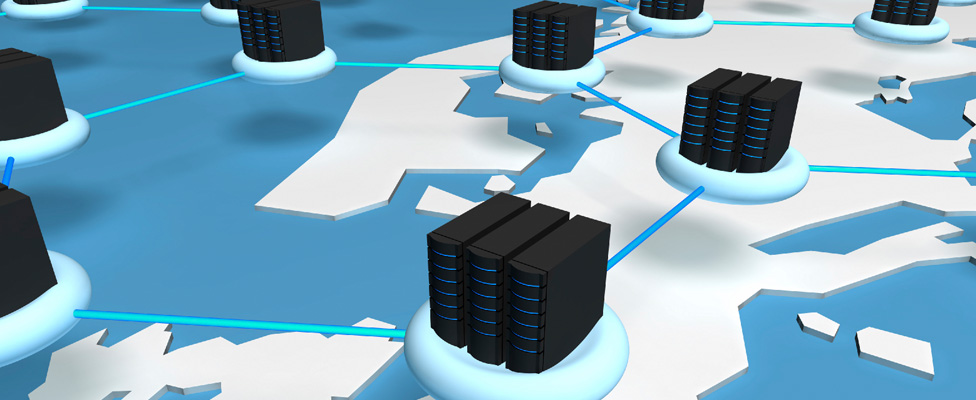
The Intelligent Edge: Making Digital Transformations a Reality
What's the reality underpinning the hype of digital transformation? What do demonstrations at two recent European trade shows tell us about what's possible and what technology lies ahead?
You can hardly read an article or blog post in the world of IT and beyond without quickly coming across the words "digital transformation." With all the media noise about it, 5G, and IoT, it is hard to discern the most important elements that will enable advances and business transformation. However, at the Mobile World Congress show in Barcelona -- and perhaps even more so at the Embedded World event that occurred simultaneously in Nuremburg, Germany at Embedded World -- some key pieces emerged.
For example, in Barcelona, demonstrations provided tangible evidence of the progress being made at a network level to enable mass market deployments. As an eye-catching network example of the progress, you could sit behind the wheel of a truck on the Vodafone booth and drive it, in real time, over 5G. The truck was actually on an airfield in Germany, yet it responded to your every remote turn of the wheel (demonstrating low latency) as if you were sitting in the cab itself.
That type of attention-grabbing demonstration is only possible thanks to organizations such as the GSMA, the 3GPP, and the mobile operator community that put work into defining and standardizing the 5G family of network technologies. For example, because 5G networks were always imagined as enabling many and varied machine-related applications, one of its design pillars was to allow multiple access technologies (such as satellite, Wi-Fi, fixed line, and other 3GPP technologies) to work together to serve its many diverse use cases.
In Nuremberg there were advances at the device level, with companies -- including my own -- lifting the lid on how the industry is enabling the necessary technical advances by building very low powered IoT edge devices that can deliver the intelligence and processing power required for future deployments.
Of course, it's not just the network operators and standards bodies at the forefront of the revolution. We're now seeing great interest in IoT hardware from the giant software players as the true importance of IoT edge computing emerges. Google has announced its proprietary edge processing unit, Microsoft its own edge MCUs, and Intel is teaming up with Dell Technologies to deliver IoT solutions. That is three IT giants all looking to capitalize on the shift of intelligence from the core network to the edge devices.
It was clear that this focus on the edge is being driven by vendor innovation in IoT intelligence. Control is moving into IoT's "things" themselves, breaking down the conventional cloud intelligence model. ABI, for example, forecasts this intelligence at the edge trend will see three million new IoT edge devices added every day by the year 2023. (Forecast is available here for ABI subscribers.)
Furthermore, as we have seen, the evolution of the mobile infrastructure is not just about adding the bandwidth and capacity necessary for mass market deployments -- it is also about being able to support billions of things that have different characteristics and different profiles of data behavior.
This demands rebalancing the IoT because the connected "things" at the edge must:
- Become smarter
- Do more of the work
- Become more autonomous
- Work smoothly across the various network technologies
These developments will help stop a deluge of unfiltered data being pumped to a remote cloud because the information sent from the edge device will have been locally processed and analyzed. For example, a HVAC controller does not need to constantly update an ambient temperature reading. Instead, it should only communicate changes, thereby conserving the energy of any battery-operated devices and making best use of the available bandwidth. Indeed, the GSMA has stated that it wants LPWA networks to support devices where a single battery charge can last several years.
This emerging intelligent edge has been created by the combination of an increase in the computational power of edge devices; advances in distributed software technologies, tools and standards; and the ability to bring these all together in future mass-market connected products. In addition, these products will meet the required small size and low power consumption targets, and they will use economies of scale to hit the price point necessary to fulfil the "connectivity manufactured into everything" that is the vision of the IoT industry.
Bringing forward products and modules able to hit those three requirements -- small size, low power, and a competitive price -- was a common theme at Embedded World.
Networks and businesses become transformed and are more efficient when the data they receive has already been transformed into actionable intelligence in near real time. Make no mistake, having the intelligence within the devices at the edge of the network is central to that process. What's more, it is the reality underpinning the transformational hype.
About the Author
Alon Segal the SVP for software and services at Telit and responsible for the technology road map and product strategy. He is a visionary technologist and entrepreneur with global work experience. Throughout his career, he has held senior technical roles that contributed to business growth and leading-edge innovation. Prior to joining Telit, Alon was the chief product officer and co-founder of Zoeticx, an SaaS middleware solution that turns healthcare IT into an active environment, where patient medical information reaches out for providers’ attention. Alon has authored and been granted multiple patents. Alon received an MBA in finance and operations research from Tel Aviv University and a B.Cs Cum Laude from Technion (Israel Institute of Technology).